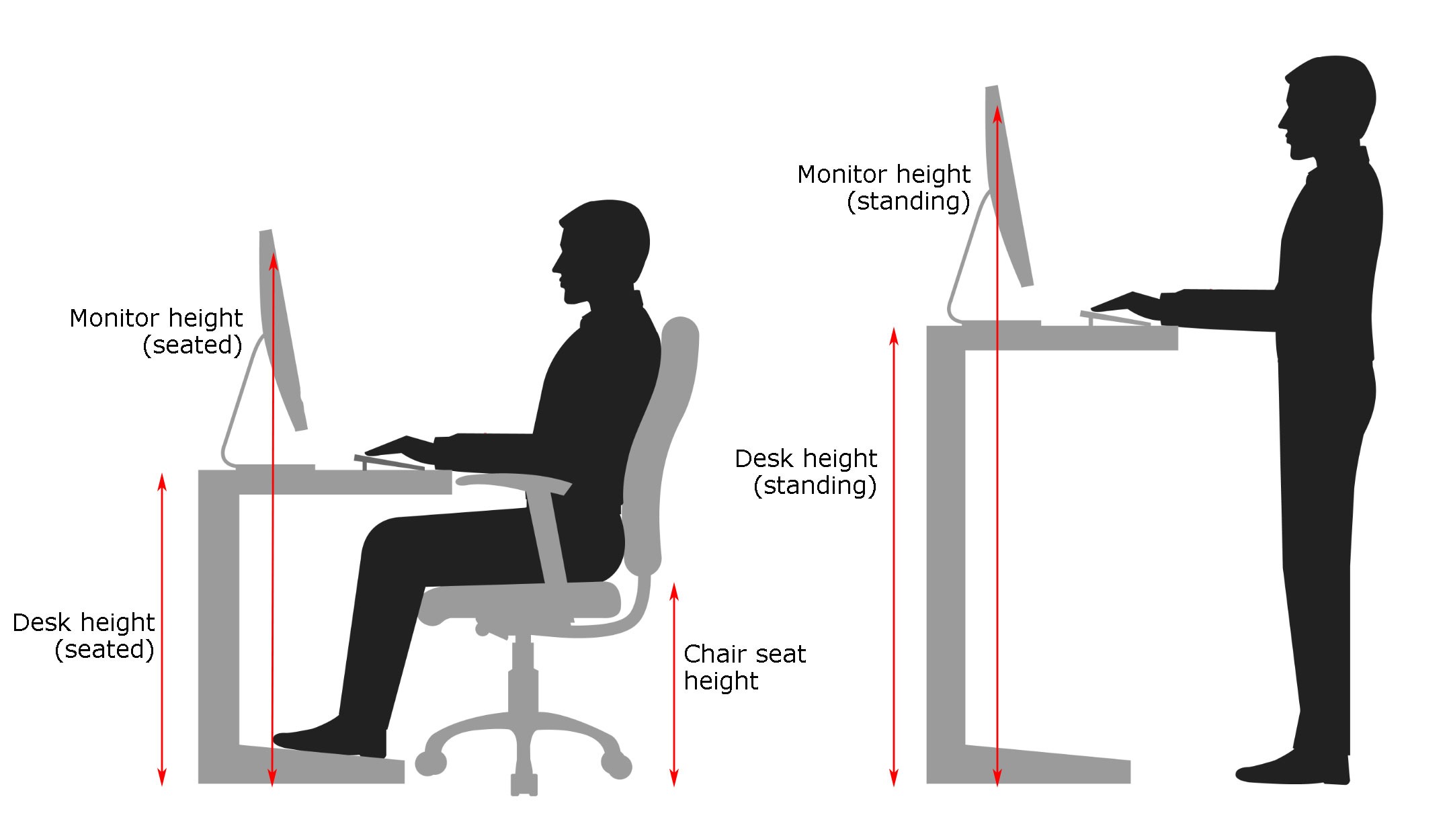Ergonomic Considerations and Ideal Desk Chair Height

Maintaining the correct desk chair height is paramount for optimal ergonomics and overall well-being. A poorly adjusted chair can lead to a cascade of discomfort and potential long-term health issues, impacting productivity and quality of life. Understanding the relationship between chair height and posture is the first step towards creating a healthy and efficient workspace.
Posture and Chair Height Interdependence, Ideal desk chair height
Proper posture relies heavily on the correct chair height. When seated at the ideal height, your body naturally aligns itself, minimizing strain on your spine, neck, and shoulders. The goal is to achieve a 90-degree angle at both your hips and knees. This posture distributes your weight evenly, reducing pressure points and promoting blood circulation. Conversely, an incorrectly adjusted chair forces your body into unnatural positions, leading to muscle fatigue, pain, and potential long-term musculoskeletal problems. For example, a chair that’s too low forces you to hunch forward, straining your back and neck, while a chair that’s too high can cause your legs to dangle, restricting blood flow and increasing pressure on your thighs.
Adjusting Chair Height for Optimal Posture
Achieving the 90-degree angle at the hips and knees involves a simple yet crucial adjustment process. First, ensure your feet are flat on the floor. Then, adjust the chair height until your thighs are parallel to the floor and your knees are bent at a 90-degree angle. Your lower back should comfortably rest against the chair’s backrest. If your feet don’t reach the floor, consider using a footrest to maintain proper posture. Regularly check your posture throughout the day and make minor adjustments as needed, especially if you’ve been in the same position for extended periods. Remember, slight variations are acceptable, but significant deviations should prompt immediate adjustment.
Impact of Incorrect Chair Height on Physical Health
Incorrect chair height significantly impacts physical health, leading to a range of problems. A chair that’s too low often results in rounded shoulders and forward head posture, causing neck and upper back pain. This posture can also compress the nerves and blood vessels in the neck and shoulders, leading to headaches, numbness, and tingling in the arms and hands. Conversely, a chair that’s too high can strain the lower back, leading to lower back pain and sciatica. The dangling legs can also cause poor circulation, leading to discomfort and fatigue in the legs and feet. These issues can accumulate over time, resulting in chronic pain and reduced mobility. For instance, a prolonged period of sitting in an improperly adjusted chair can lead to conditions like carpal tunnel syndrome due to pressure on the median nerve in the wrist.
Signs of Improper Chair Height and Solutions
Several common signs indicate that your chair height is incorrect. These include persistent lower back pain, neck pain, shoulder stiffness, numbness or tingling in the extremities, and general discomfort while sitting. Furthermore, frequently shifting positions or adjusting your posture suggests an ill-fitting chair height. If you experience these symptoms, immediately adjust your chair height. If the discomfort persists despite adjustments, consider seeking professional advice from an ergonomist or physical therapist to rule out other underlying causes. They can provide personalized recommendations for chair adjustments and suggest additional ergonomic solutions, such as lumbar support or a more supportive chair. Simple solutions such as using a footrest, adjusting your desk height or even taking regular breaks to stand and stretch can also alleviate discomfort.
